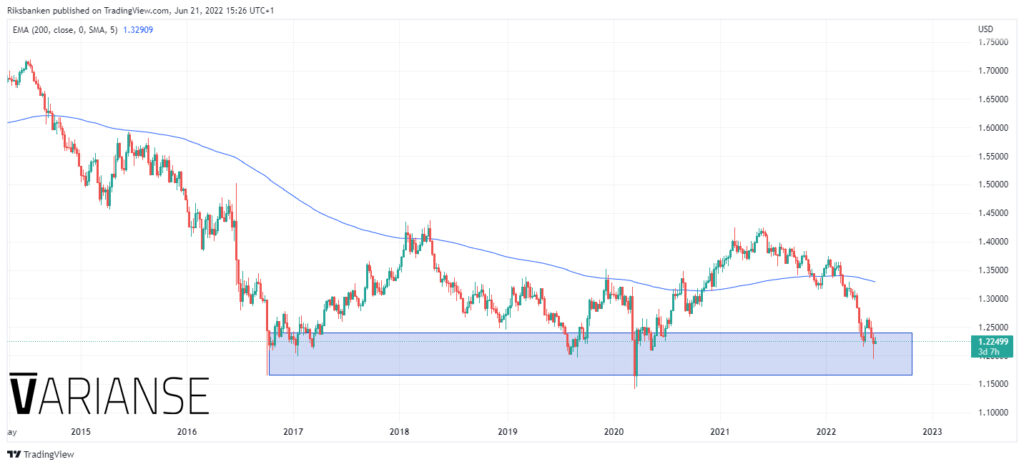I’m tempted to look at a higher time frame chart of GBP/USD and say it looks cheap. Whether the pound has fallen due to the flash crash or COVID-19 concerns, buyers have always been quick to snap up GBP/USD anywhere between 1.24 and 1.16 levels. That might ultimately hold out to be true, but I’m not completely convinced that history will repeat itself.
UK inflation is my top concern for the British pound. Economic theory suggests that relatively higher inflation should put downward pressure on the nominal exchange rate, all other considerations being equal. Wednesday’s May UK CPI release is expected to show UK CPI rose to 9.1% y/y, which would put UK inflation ahead of that for the US for a second consecutive month.
Furthermore, the Bank of England looks for the time being less inclined than the Fed to do something about inflation. The Fed raised interest rates by 75 bps in June to take the Fed funds rate to a range of 1.5% to 1.75% and signaled its willingness to do what it takes to control inflation.
In contrast, the Bank of England raised by 25 bps in June to take the bank rate to 1.25% as the majority of the MPC resisted a 50 bps hike. Even if the Bank of England does seek to tighten monetary policy more aggressively going forward, it may face more of an uphill climb in terms of convincing markets that it is serious about inflation.
GBP/USD buyers also need to contend with heightened fears of a recession on both sides of the Atlantic, which would most likely disfavor the British pound more than the US dollar, as global investors seek the safety of US assets versus the rest of the world. In summary, GBP/USD looks cheap but for good reason.


